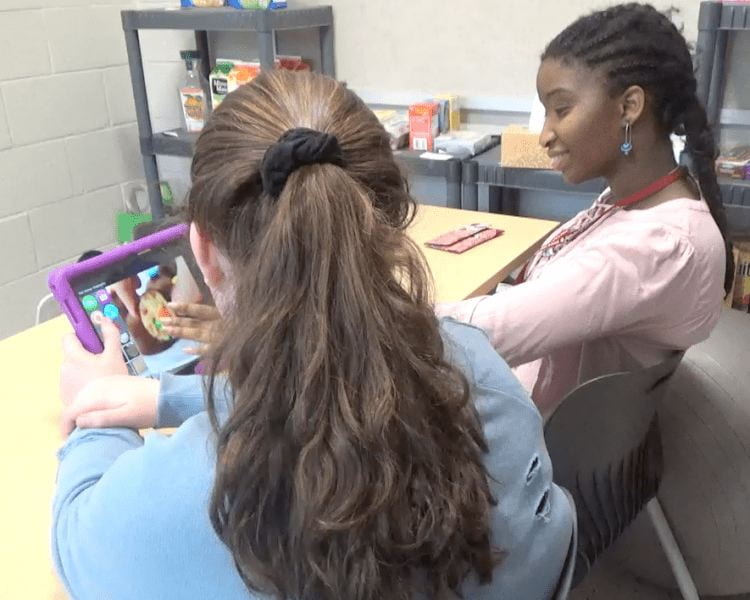
This module provides information on strategies and tools professionals can use while using visual scene displays with young children who use augmentative and alternative communication (AAC). These evidence-based strategies and tools have been shown to be effective in children and adults and across varying cognition and language levels and diagnoses, but we are focusing specifically on studies conducted with young children in this module. This module consists of readings and interactive material to support translation of research to practice.
To view this article bundle, please register and log in to the AAC Learning Center


Learning Outcomes
You will be able to:
- Discuss how visual scene displays can support individuals in both participating in the activity and as a communication support.
- Describe the interventions using visual scene displays with young children who rely on AAC across diagnoses
- Explain how to incorporate visual scene displays into activities with individuals who rely on AAC
Prerequisites
None
Assessment Type
At the end of the module, you will complete a short quiz. You must achieve 80% accuracy to earn CE credit
Accommodations
If you need special accommodations, please contact Beth Frick Semmler at bfs5682@psu.edu or Kelly Webb at kdw5@psu.edu.
Target Audience
Speech-language pathologists looking for evidence-based strategies in AAC and who work with individuals with complex communication needs.
More Information
For more information about this program, please contact Beth Frick Semmler at bfs5682@psu.edu or Kelly Webb at kdw5@psu.edu.
Grievances and Complaints
If you have a complaint regarding registration, delivery process and procedures, facilities, access, service, or any other grievance about the program please submit your written complaint via email to Kelly Webb at kdw5@psu.edu within 30 days after program completion. Upon request, Kelly will provide a copy of how complaints are addressed for any continuing education program offered by the Penn State Department of Communication Sciences and Disorders.
Affirmative Action and Nondiscrimination
Please visit https://affirmativeaction.psu.edu/welcome/statements/ to view information regarding affirmative action and Penn State’s nondiscrimination policy.
If you do not have an ASHA Member Number or are not an ASHA certificate holder, please review the following link which contains ASHA’s Eligibility to Earn ASHA CEUs Online Form. This should be completed as part the reporting process.
Contents in This Course
– Patenaude, D., McNaughton, D., & Liang, Z. (2024). Using visual scene displays with young children: An evidence-based practice synthesis. Journal of Special Education Technology, 0(0), 1-13,
– Chapin, S.E., McNaughton, D., Light, J., McCoy, A., Caron, J., & Lee, D.L. (2022). The effects of AAC video visual scene display technology on the communicative turns of preschoolers with autism spectrum disorder. Assistive Technology, 34(5), 577-587. doi:10.1080/10400435.2021.1893235.
– Laubscher, E., Barwise, A., & Light, J. (2022). Effect of video augmentative and alternative communication technology on communication during play with peers for children with autism spectrum disorder. Language, Speech, and Hearing Services in Schools, 53, 1101-1116. https://doi.org/10.1044/2022_LSHSS-21-00136
– Bhana, N., McNaughton, D., Raulston, T., & Ousley, C. (2020). Supporting communication and participation in shared storybook reading using visual scene displays. Teaching Exceptional Children, 52(6), 382-391. doi:10.1177/0040059920918609.
Grievances and Complaints
If you have a complaint regarding registration, delivery process and procedures, access, service, or any other grievance about the program please submit your written complaint via email to Kelly Webb at kdw5@psu.edu within 30 days after program completion. Upon request, Kelly will provide a copy of how complaints are addressed for any continuing education program offered by the Penn State Department of Communication Sciences and Disorders.
Time Ordered Agenda (based on word count and Moodle data)
66 Minutes – Patenaude et al., (2024) Article and blog (63 + 3)
78 Minutes – Chapin et al., (2021) Article and blog with videos (72 + 6)
89 Minutes – Laubscher et al., (2022)
43 Minutes – Bhana et al., (2020)
TOTAL: 4.6 hours
Disclosures and Author Information
The Rehabilitation Engineering Research Center on Augmentative and Alternative Communication (RERC on AAC) is a multi-site team of researchers, individuals with disabilities, clinicians, engineers, clinicians, educators, and professions who share the goal of researching and designing AAC that meets the communication and participation needs of individuals with disabilities. The contents included in this module were developed under grants from the National Institute on Disability, Independent Living, and Rehabilitation Research (NIDILRR grants # 90RE5017, #90REGE0014). NIDILRR is a Center within the Administration for Community Living (ACL), Department of Health and Human Services (HHS). The contents do not necessarily represent the policy of NIDILRR, ACL, HHS, and you should not assume endorsement by the Federal Government.
None of the authors have a financial interest in the AAC applications discussed in this module.
Emily Laubscher – no financial or non-financial disclosures related to report
Allison Barwise – no financial or non-financial disclosures related to report
Janice Light – no financial or non-financial disclosures related to report
David McNaughton – no financial or non-financial disclosures related to report
Shelley E. Chapin – no financial or non-financial disclosures related to report
Ashley McCoy – no financial or non-financial disclosures related to report
Jessica Caron – no financial or non-financial disclosures related to report
David L. Lee – no financial or non-financial disclosures related to report
Dana Patenaude – no financial or non-financial disclosures related to report
Zhigao Liang – no financial or non-financial disclosures related to report

















